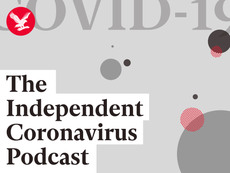We need a clear post-lockdown strategy otherwise people will tire of social distancing
Everyone we spoke to reported seeing or hearing of others who were either breaking rules, for example, going out more than necessary or getting too close to others while shopping
Dominic Raab told the UK public last week that they “need to be patient” as they await further details about lifting the Covid-19 lockdown.
He suggested that “we must continue to take the right decisions at the right moment in time”, yet the range of countries’ strategies in terms of when and how lockdowns are lifted suggests that there may not be one single “right” way or “right” time to ease restrictions. For many people, the uncertainty surrounding our exit strategy is creating anxiety.
The worry is that, in the absence of a clearly defined exit strategy, or at the very least in the absence of some provisional dates and scenarios for different aspects of society to re-open, public support for, and adherence to, social distancing guidelines may wane. Adherence is crucial to minimise and slow the spread of the virus.
In our recent report, as part of our ongoing research, we explored people’s experiences during lockdown and their views on how they and others would likely behave after this is over. We found that one of the aspects people found most difficult to cope with was the uncertainty over how long lockdown would last and what social distancing would look like thereafter. Our study also suggests that a visible minority of people are not sticking to government guidelines on social distancing, which is also increasingly reported in the media.
Everyone we spoke to reported seeing or hearing of others who were either breaking rules, for example, going out more than necessary, or bending the rules, such as getting too close to others while shopping.
Research shows that providing a timely and clear rationale for quarantine is essential to ensure people adhere to guidelines. We found that people felt that they were often receiving “mixed messages” around Covid-19, or that terms such as “social distancing” or “essential supplies” were ambiguous, open to interpretation and, in some cases, were being taken advantage of.
Police chiefs have voiced concerns about a “volatile and agitated society” after the lockdown. We are also worried about vulnerable people. Two main concerns prevail. Firstly, some people are indeed ready for a “release” as soon as current restrictions are lifted. Understandably, these people are keen to engage in as much social activity as possible. For them, going on holidays and seeing friends and family are a priority. For those with children, allowing them to interact with other children is also important.
Such desires are understandable because, as we argue in our study, lockdown is taking an emotional toll for many, and particularly those in low-paid, flexible or insecure occupations. This desire needs to be taken into consideration when planning an exit strategy so that Covid-19 cases post lockdown do not rise too rapidly, potentially contributing to a second wave. Unless authorities provide further concrete guidance on how best to start social reintegration, the risk is that more people will take matters into their own hands as “quarantine fatigue” intensifies.
On the other hand, there is a group of people who feel they will continue to avoid social contact even after lockdown ends. For them, the anxiety around health or socialising may continue long after the pandemic has subsided. The need for people gradually to return to “normal” social activity as soon as it is judged safe to do so by medical experts, is important for both for the economy and public health. This may reduce the risk that situational anxiety or depression related specifically to Covid-19 does not develop into feelings of anxiety and depression that persist long after the pandemic. The people who may be experiencing social anxiety must also be taken into consideration when planning how to release lockdown.
Government must provide more detail on their potential exit strategy as soon as possible and as clearly as possible. Doing so will help to relieve public anxiety, ensure that public support for social distancing remains high and reduce the potentially negative impacts of quarantine fatigue.
Dr Simon Williams is a senior lecturer in people and organisation at Swansea University







Join our commenting forum
Join thought-provoking conversations, follow other Independent readers and see their replies